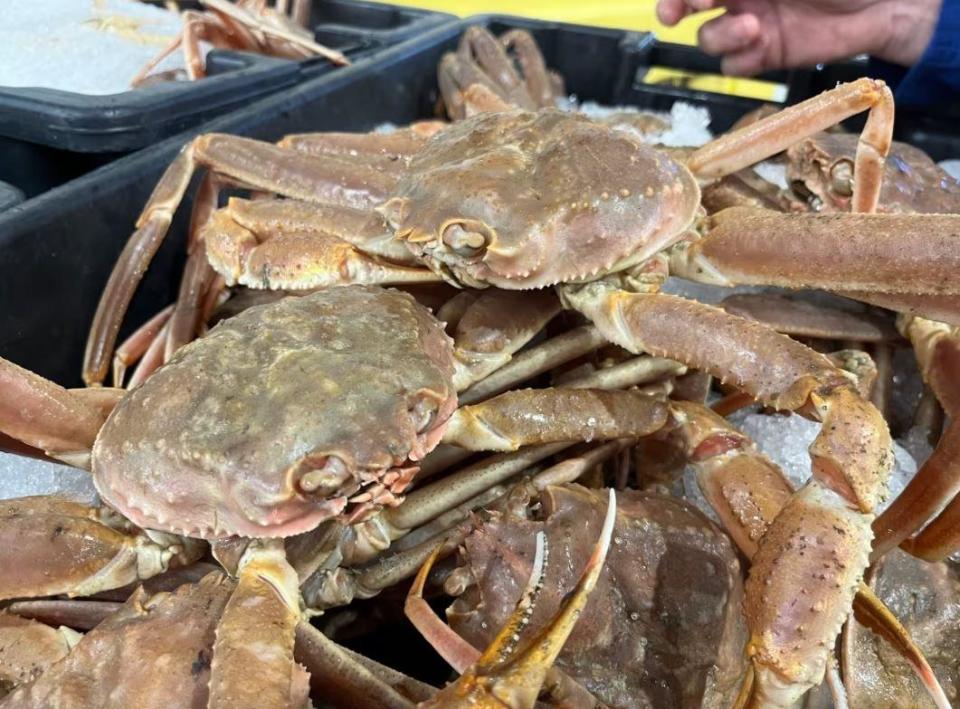Warming ocean could hurt future for snow crab, as DFO holds line on stock assessment


DFO biologist Julia Pantin says the overall stock status of snow crab remains relatively stable but recent environmental conditions may limit the stock's growth in the short term. (Mike Moore/CBC)
Fisheries and Oceans Canada released its annual stock assessment on snow crab Tuesday in St. John's, and the data indicates the stock remains on par with last year with no major changes.
That means the stock is projected to remain healthy for the majority of fishing areas around the province, with one exception. The 2HJ zone off the east coast of Labrador remains in the cautious zone, similar to last year's assessment.
But the positive news may be a result of an ocean cooling period that happened between 2012 and 2018.
Snow crab flourish in colder water, allowing young crab the ability to grow to exploitable age and size. That's between nine and 13 years old with a shell size of over 94 mm for males. Female crab cannot be retained by harvesters.
But the northern Atlantic Ocean has been in a warming period since. That makes it harder for juvenile crab to grow, adding on two to four more years to reach maturity — a threat to an often-lucrative fishery. Landed values for snow crab in N.L. last year amounted to $258 million, according to DFO data.
'Quite warm, actually'
DFO biologist Julia Pantin told reporters that's something scientists are going to monitor and it makes the long-term future of the stock unpredictable.
"We've been in a warming period since 2018. Now, in 2023 it was a little bit closer to normal than 2022 and 2021, which were quite high, quite warm actually," Pantin said.
"I think what we need to do is keep looking at these small sizes of crab. We are seeing less of them so there's going to be less to grow into exploitable size, presumably. So that's something really important to keep an eye on, is the small crab coming up through and hopefully reaching exploitable size."

The snow crab stock in the waters surrounding Newfoundland and Labrador remains on par with last year. (Terry Roberts/CBC)
Warming ocean temperatures are not an ideal environment for younger crab, she said.
The same situation was noted a year ago — smaller crab were being found less often.
"That's your recruitment into the exploitable bio-mass and your fishery," said Pantin.
"Cooler temperatures is what we're wanting for snow crab, particularly bottom temperatures."
Still, the crab industry could see similar numbers this year as compared to last. Fishery landings increased from a 25-year low in 2019 to over 51,000 tonnes in 2023.
DFO data suggests the total allowable catch increased in most zones last year, with the exception of 2HJ in Labrador and 4R3Pn on the island's west coast.
"In recent years we've been seeing very high catch rates. In some areas, some of the highest catch rates they've seen in a while," Pantin said.
"In two areas in 2023 we saw a bit of a decrease in catch rates in 3K and 3PS but it's important to note that just because the catch rates are low isn't necessarily because the resources isn't there. There's lots of other issues around the dynamics of the fishery and harvesters themselves that may impact what their catch rates are."
Download our free CBC News app to sign up for push alerts for CBC Newfoundland and Labrador. Click here to visit our landing page.


